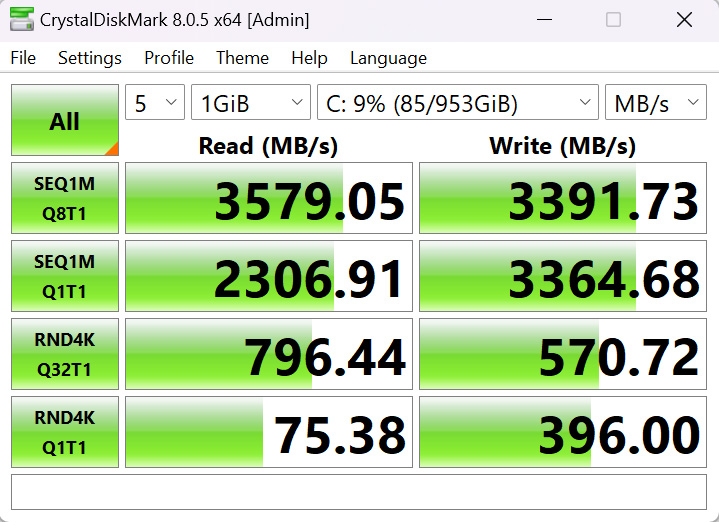Default CPU behaviour
Just before diving into the benchmarks, it is quickly worth summarising default CPU behaviour, as it's quite interesting. There's a few different profiles available to choose from within the PredatorSense software, but ‘Balanced' is the default. Interestingly, this has a PL2 of 253W but a PL1 of just 150W, so while the CPU boosts to about 5GHz on the P-cores initially with package power at around 250W, after about a minute power drops to around 150W, resulting in the P-cores clocking at just 4.2-4.3GHz.
I also tried the Turbo profile, but it turns out the PL1 and PL2 values are exactly the same, though it did run most of the Cinebench 30-minute run at 4.3-4.4GHz, so maybe 100-200MHz faster than the Balanced mode, but really nothing significant. Neither mode effects GPU power either, with the 4080 running comfortably at around 2745MHz, and power at over 300W.
For reference, a completely stock i9-13900KS in the KitGuru GPU test rig runs at 5.6GHz on the P-cores initially, only settling down to 5.4GHz or so due to thermal constraints – so the CPU in the Orion X is leaving at least 1GHz clock speed on the table due to its 150W PL1.
At this point, I had a look in the BIOS to see if it was possible to over-ride the fairly restrictive 150W PL1 figure and found that there were barely any actual CPU settings that can be adjusted – you just get the choice of the same four modes that are available within the PredatorSense software.
I did, however, also discover that with default settings, XMP is not enabled for the Orion X! The 5600MT/s CL46 memory that is found by default is actually a 6000MT/s CL44 kit, and while that's not massive difference, it seems bonkers to me to be leaving this performance on the table due to XMP not being enabled by default.
For all testing then, this was done at the default, out of the box settings – using the Balanced power profile and with XMP off. After all, most people buying a prebuilt won't be diving into the BIOS to tweak things, so this felt the most representative way to test the machine.
Benchmarks
Starting with Cinebench Multi Core then, we see a sizeable performance loss for the Orion X when compared to our own GPU test rig with the same CPU – the Orion X scores about 23% lower due to its clock speed deficit.
The restrictive power limit isn't such a problem for the single core test, where we see just a 2% difference between the two systems.
Blender is another all-core workload however, and it's again a huge gain for the KitGuru test rig considering both systems use the same CPU – we see a 25% reduction in performance on the Orion X.
PCMark 10 follows a similar trend, though the margins aren't quite so large – across all four metrics, the Orion X comes in slower.
Memory bandwidth also shows the Orion X to be slightly lacklustre, hit around 75,000 MB/s read and 70,000 MB/s write. I also re-ran this test with XMP enabled and speed increased to about 82,000 MB/s and 76,000 MB/s, respectively, so about 9% extra memory bandwidth has been left on the table due to XMP being turned off by default.
The good news is the GPU performs very similarly to the RTX 4080 Founders Edition I installed in the KitGuru test rig, both delivering around 28,000 points in Time Spy.
Finally, SSD speeds are somewhat disappointing considering the price of the machine. As we mentioned, Acer is using a pair Micron PCIe Gen3 SSDs and as such, we don't see speeds exceed 3600MB/s. It'll be fine for gaming but when Gen5 SSDs are readily available, it does feel a definite step back.
 KitGuru KitGuru.net – Tech News | Hardware News | Hardware Reviews | IOS | Mobile | Gaming | Graphics Cards
KitGuru KitGuru.net – Tech News | Hardware News | Hardware Reviews | IOS | Mobile | Gaming | Graphics Cards











